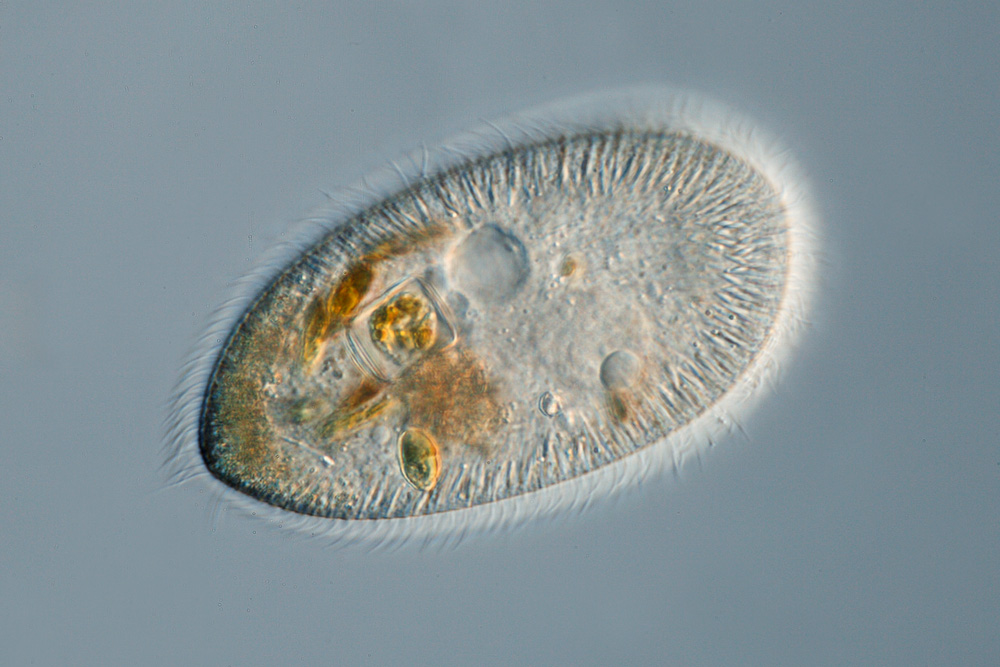|
Frontonia
''Frontonia'' is a genus of free-living unicellular ciliate protists, belonging to the order Peniculida. As Peniculids, the ''Frontonia'' are closely related to members of the genus ''Paramecium''. However, whereas ''Paramecia'' are mainly bacterivores, ''Frontonia'' are capable of ingesting large prey such as diatoms, filamentous algae, testate amoebas, and even, in some circumstances, members of their own species. In bacteria-rich saprobic conditions, ''Frontonia leucas'' can live as a facultative bacterivore. ''Frontonia'' are widely dispersed, and members of the genus can be found in marine and freshwater environments on every continent. Appearance and characteristics ''Frontonia'' species vary in length from 50 to 600 micrometres. Cell bodies are typically ovoid or elongate, and somewhat flattened from back to front. They are flexible, uniformly ciliated, and usually surrounded by trichocysts. The small oral aperture is pear-shaped, and located in the anterior half ... [...More Info...] [...Related Items...] OR: [Wikipedia] [Google] [Baidu] |
Frontonia Arenaria Kahl
''Frontonia'' is a genus of free-living unicellular ciliate protists, belonging to the order Peniculida. As Peniculids, the ''Frontonia'' are closely related to members of the genus '' Paramecium''. However, whereas ''Paramecia'' are mainly bacterivores, ''Frontonia'' are capable of ingesting large prey such as diatoms, filamentous algae, testate amoebas, and even, in some circumstances, members of their own species. In bacteria-rich saprobic conditions, ''Frontonia leucas'' can live as a facultative bacterivore. ''Frontonia'' are widely dispersed, and members of the genus can be found in marine and freshwater environments on every continent. Appearance and characteristics ''Frontonia'' species vary in length from 50 to 600 micrometres. Cell bodies are typically ovoid or elongate, and somewhat flattened from back to front. They are flexible, uniformly ciliated, and usually surrounded by trichocysts. The small oral aperture is pear-shaped, and located in the anterior h ... [...More Info...] [...Related Items...] OR: [Wikipedia] [Google] [Baidu] |
Monophyly
In cladistics for a group of organisms, monophyly is the condition of being a clade—that is, a group of taxa composed only of a common ancestor (or more precisely an ancestral population) and all of its lineal descendants. Monophyletic groups are typically characterised by shared derived characteristics (synapomorphies), which distinguish organisms in the clade from other organisms. An equivalent term is holophyly. The word "mono-phyly" means "one-tribe" in Greek. Monophyly is contrasted with paraphyly and polyphyly as shown in the second diagram. A ''paraphyletic group'' consists of all of the descendants of a common ancestor minus one or more monophyletic groups. A '' polyphyletic group'' is characterized by convergent features or habits of scientific interest (for example, night-active primates, fruit trees, aquatic insects). The features by which a polyphyletic group is differentiated from others are not inherited from a common ancestor. These definitions have take ... [...More Info...] [...Related Items...] OR: [Wikipedia] [Google] [Baidu] |
Microtubule
Microtubules are polymers of tubulin that form part of the cytoskeleton and provide structure and shape to eukaryotic cells. Microtubules can be as long as 50 micrometres, as wide as 23 to 27 nm and have an inner diameter between 11 and 15 nm. They are formed by the polymerization of a dimer of two globular proteins, alpha and beta tubulin into protofilaments that can then associate laterally to form a hollow tube, the microtubule. The most common form of a microtubule consists of 13 protofilaments in the tubular arrangement. Microtubules play an important role in a number of cellular processes. They are involved in maintaining the structure of the cell and, together with microfilaments and intermediate filaments, they form the cytoskeleton. They also make up the internal structure of cilia and flagella. They provide platforms for intracellular transport and are involved in a variety of cellular processes, including the movement of secretory vesicles, ... [...More Info...] [...Related Items...] OR: [Wikipedia] [Google] [Baidu] |


